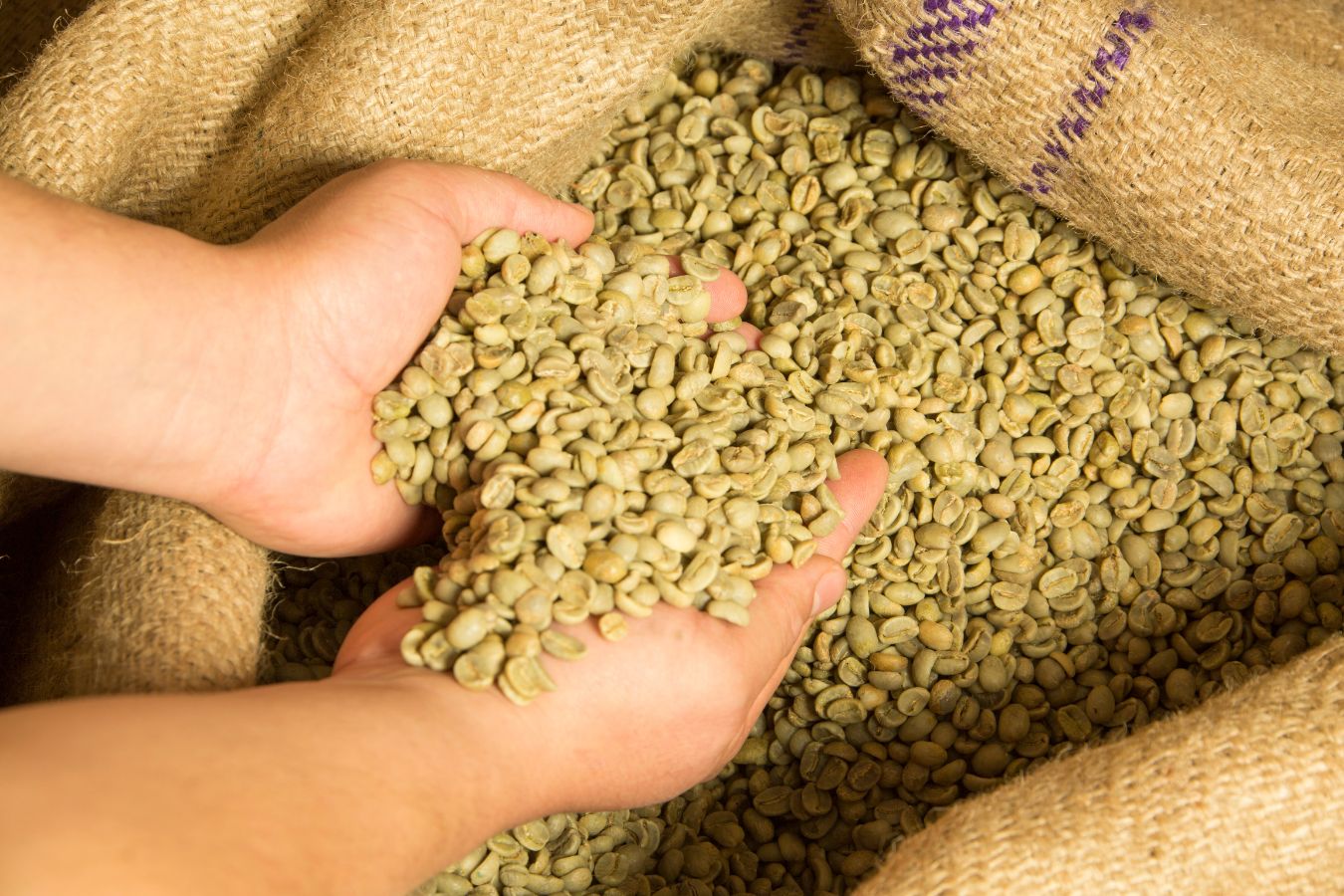
What Are Green Coffee Beans (Un-roasted Coffee)? You must have probably heard a lot about green coffee (unroasted coffee), and in most courses, many centers will have their special topics teaching. However, to help you have a better overview of the concept of this coffee variety. In the article below, we will learn about what green coffee beans are and their problems.
Green coffee is also known as fresh coffee. In essence, coffee beans are unsalted coffee beans. Naturally green, picked from the trees, and not through any processing process.
How to classify green coffee beans (unroasted coffee)?
People classify coffee beans in many different ways based on the beans’ type, processing, and size.
Classification of green coffee (un-roasted coffee) by type
Green coffee consists of two popular types of coffee, Arabica coffee and Robusta coffee. Arabica coffee is also known as tea coffee, usually grown in places with an altitude of 1000m or more. Many people love Arabica coffee because of its distinctive aroma, aftertaste, less bitterness, and bar.

Arabica has five popular varieties: Caturra, Bourbon, Mocha, Typica, and Catimor. Unlike Arabica, robusta coffee is sunny, suitable for a tropically hot and humid climate, grown in low mountainous areas, has good disease resistance, and is high in caffeine.
In addition to Arabica and Robusta, Vietnam is also famous for Excelsa coffee (Jackfruit coffee) and Culi coffee (Bi coffee)
Classification of green coffee beans (unroasted coffee) by processing method
Currently, there are three popularly used methods of coffee processing: dry processing, wet processing, and honey processing (D’codeS has its analysis of these three processing methods)
Classification of green coffee beans by grain size
After being ground, we will get coffee beans and coffee grain shells. People call these beans bucket coffee because they are not classified, so they have different kernels and sizes. Unroasted coffee will organize green coffee beans into seeds of various lengths depending on the customer’s needs. High-quality coffee beans include 16, 18, 19, and 20.
However, the two most common nuts for making roasted coffee beans are sieve 16 and sieve 18. Coffee beans will use smaller sieve sizes of 14 and 15 of lower quality as mixing materials to reduce the sieve cost. People use coffee sieve size 13 to produce instant coffee.
The green coffee beans (unroasted coffee) processing process
Harvest fresh coffee fruit
When it turns red, the farmer will harvest it. In Vietnam, farmers still harvest coffee manually, picking ripe coffee beans by hand.
The fresh coffee preparation process
After being picked down, fresh coffee berries will be separated from the shell immediately using wet and honey processing methods. If using dry processing methods, the coffee fruit will be naturally sun-dried to reduce the amount of water before taking away the peel.
Depending on the processing method, the coffee will be fermented or dried.

Reduces humidity in coffee beans: For pre-packing, coffee beans are treated with 12.5% moisture by sun drying.
Screening and classification of coffee: After people dry and reduce the moisture of the coffee, they will screen it to remove foreign impurities and classify it according to the size of the beans. Then, the beans will be colored or polished depending on the buyer’s needs.
How to preserve green coffee beans (unroasted coffee)
Store coffee with sacks: (sacks, jute sacks). That is one of the most commonly used methods today. However, when using this method, you need to pay attention to some of the following points.
- The humidity of coffee beans before putting them in storage bags must be less than 13%
- As few impurities in coffee as possible, for grade I and II coffees, the percentage of contaminants must be < 0.5%.
- Store in warehouses with good insulation and humidity
- It would help if you placed disinfection and cleanliness before stacking coffee bags.
- It would be best not to place coffee bags directly on the floor and close to the wall; they should be 0.3m from the background and 0.5m from the wall.
- To avoid the compression of the sacks due to the upper sack load reduction, you should reverse the order of stacking every three weeks.

Storage in batches: To save packaging and preserve
coffee for longer, people often keep coffee beans in corrugated iron, concrete, or well-closed wooden cylinders. The advantage of this form of preservation is to save packaging and increases storage time, saves warehouse volume and avoids the phenomenon of tight compression that reduces the disassembly of coffee beans.
The value of green coffee (unroasted coffee)
The trading price of coffee on the world commodity market is now huge, and the trading volume of coffee beans is second only to oil. The higher the quality of coffee, the greater the price. Arabica coffee is highly appreciated and more expensive than Robusta coffee.
With the knowledge in the above article, we hope you have a more accurate view.
Source: https://www.dcodeslab.coffee/


